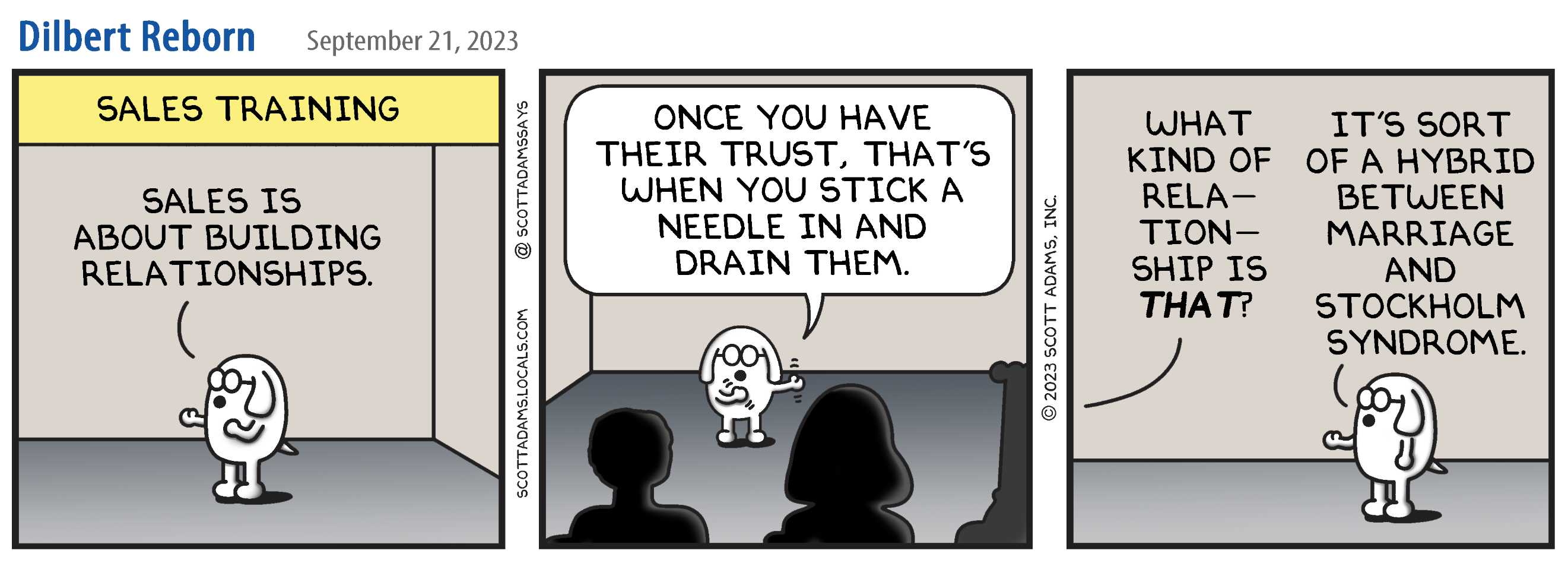Sebastian Rushworth MD: What defines a good drug?
re: follow the money
re: ethics in medicine
re: Do drug trials underestimate side effects?
re: The Dismal Anti-Science of Modern Medicine: “less than 0.3% of all adverse drug events and 1-13% of serious events are reported to the Food and Drug Administration”
re: Recommended Books for Health and Wellness
re: Sebastian Rushworth MD
Are you aware that prescription drugs are the 3rd leading cause of death in the US and Europe?
Sebastian Rushworth MD: What defines a good drug?
2022-04-14, by Sebastian Rushworth M.D. Emphasis added.
Most people will naturally assume that when a doctor prescribes them a drug, it’s because the doctor thinks they will receive a meaningful benefit from it. Most people have never heard the term NNT, which stands for Number Needed to Treat, or to put it another way, the number of people who need to take a drug for one person to see a noticeable benefit. It’s a bit of a counterintuitive concept for people outside medicine, since most people probably assume the NNT for all drugs is 1, right? If I’m getting this drug, it must be because it is going to help me. Well, wrong.
... Say you were suffering from depression, and there was a drug that could potentially improve your mood.... the drug has side effects, which you are likely to experience regardless of whether you get the benefits of the drug or not. This particular drug causes a reduction in sexual desire and increased difficulty achieving orgasm during sex... also causes subtle changes to your personality, making you more prone to take risks, less emotional, and less empathic. It increases your tendency to engage in addictive behaviours, and it’s been known to cause addictions to alcohol and gambling. Additionally, withdrawal is common, so many people have trouble getting off the drug once they’re on it... As many of you have probably guessed, the first drug I described is an SSRI... around 15% of adults in western countries take an SSRI every day.... So, what is the actual NNT for SSRI’s when used as a treatment for depression? It’s seven (7).
In other words, you need to treat seven people for one to experience a noticeable effect on their depression. The other six just get the side effects but no benefit. And when I say “effect”, I don’t mean that the depression resolved in the one person lucky enough to see a benefit. Far from it. I mean that on a certain numerical rating scale (MADRS, if you must know), they [one person!] experienced an improvement in mood that was just big enough to be detectable using statistical methods.
..Ok, next scenario. Say you’d had a heart attack, and there was a drug that could decrease your risk of another heart attack. But just as with the previous drug, there are no certainties that you will actually get any benefit from taking this drug. And this drug also has side effects. Many people who take the drug develop chronic aches and pains. The drug also causes noticeable cognitive impairment in a proportion of those taking it, and some even end up being diagnosed with dementia – how big the risk is unfortunately isn’t known, because proper studies haven’t been carried out that could answer that question. Additionally, the drug causes blood sugar levels to rise, resulting in type 2 diabetes in around 2% of those taking the drug – it is in fact one of the most common causes of type 2 diabetes.
The second drug, as many of you have probably also guessed, is a statin (examples include atorvastatin, simvastatin, and pravastatin). More than a quarter of adults over the age of 40 take a statin every day in western countries.
So, what is the NNT for statins? Well, if you’ve already had a heart attack, i.e. you’ve already been established to be at high risk for heart attacks, then the NNT over five years of treatment is 40. In other words, 39 of 40 people taking a high dose statin for five years after a heart attack won’t experience any noticeable benefit. But even if they’re not the lucky one in 40 who gets to avoid a heart attack, they’ll still have to contend with the side effects.
[DIGLLOYD: millions who have NOT had a heart attack take a statin. The NNT there is probably more like 5000 or so—4999 patients harmed for 1 benefited in some theoretical way]...Doctors have been conditioned by the pharmaceutical industry to think that drugs that provide very low probability of benefit are effective. An NNT of 10 is often considered good, and an NNT of 5 is considered excellent. Even an NNT of over 100 is often considered acceptable! Patients are rarely informed that the odds of them getting any benefit from the new drug they’re being prescribed are far less than 50:50. And they’re rarely informed about what the harms are, and how likely they are to experience them.
[“conditioned’” = repetitive training, like you would train a dog. Along with financial incentives!]Just in case you think I’m picking on a few particularly ineffective drugs with my two examples, I’m not. NNT’s of five or worse are typical for many of the most commonly prescribed drugs.
What that means is that the average 70 year old who is on five drugs continuously will probably at best only benefit in any measurable way from one of those drugs. The other four are not providing any benefit, they’re just contributing to side effects (which become increasingly likely, and increasingly deadly, the older you get). Things get even worse when you consider that drugs interact in unpredictable ways to increase the risk of side effects, so the risk of harms increases exponentially with each additional drug added. Which is why it used to be considered bad form to have a patient on more than five drugs simultaneously.
... The decision whether or not to take a certain drug requires a deep understanding of the drug (provided by the physician) and a deep understanding of personal values and wishes (provided by the patient). It requires a holistic perspective and a meeting of two minds that is literally the opposite of what doctors are asked to practice today, where we’re continuously pestered with various treatment guidelines and targets that turn physicians in to unthinking automatons and patients in to featureless blobs.
WIND: whatever happened to “first, do no harm”?

Visualize a million tombstones in the largest cemetery you can imagine extending as far as you can see. That’s how many Americans alone die every 5 years from prescription drugs.
For the vast majority of people, a prescription drug will not help and is likely to cause at least some harm, up to and including death. Re-read that first sentence above!
The vast majority of people taking prescription drugs are HARMED so that a very few can be helped. It’s an insanely bad proposition for most of us.
Has our medical profession gone insane, with its “first, do harm” modus operandi of overdiagnosis and overtreatment, with its “one symptom, one diagnosis, one drug” paint-by-numbers assembly line medicine?
There are of course exceptions: short-term use, drugs that can be seen to have immediate or short-term demonstrable benefits, any drug with NNT=1. Everything else might just be bad judgment from a public health perspective.
IMO, even an NNT=2 is too high unless the benefits can be seen and/or the side effects are known to be rare/minimal (but that is almost impossible to know, such information being actively suppressed).
Why?
Most doctors are incompetent at statistics, so they harm their patients with meds that cause harm, for dubious benefit. Presumably this is done only out of ignorance but that’s no excuse. And the risks grow exponentially as the number of meds increases, so we have the sad fact now that prescription drugs are the 3rd leading cause of death.
Even setting aside the massive financial cost to society, how any ethical doctor sign up for this awesome abuse of rational thought? Yet most all do—it’s called “standard of care”. Which is really the “standard of abuse”, stemming from follow the money, at all levels of the medical industrial complex.




